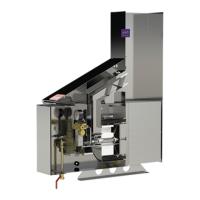WARNING: If the information in this
manual is not followed exactly, a fire or
explosion may result causing property
damage, personal injury or loss of life.
Do not store or use gasoline or other
flammable vapors and liquids near this or
any other appliance.
WHAT TO DO IF YOU SMELL GAS:
• Do not try to light any appliance.
• Do not touch any electrical switch; do not
use any phone in your building.
• Immediately call your gas supplier from a
neighbour’s phone. Follow the gas
supplier’s instructions.
• If you cannot reach your gas supplier, call
the fire department.
Installation and service must be performed
by a qualified installer, service agency or the
gas supplier.
WARNING: Improper installation,
adjustment, alteration, service or maintenance
can cause injury or property damage. Read the
installation, operating and maintenance
instructions thoroughly before installing or
servicing this equipment.
WARNING: For Outdoor Use Only.

